16 Sexual Pride Flags & What Each One Represents
There are many colors but we all bleed the same shade of red.
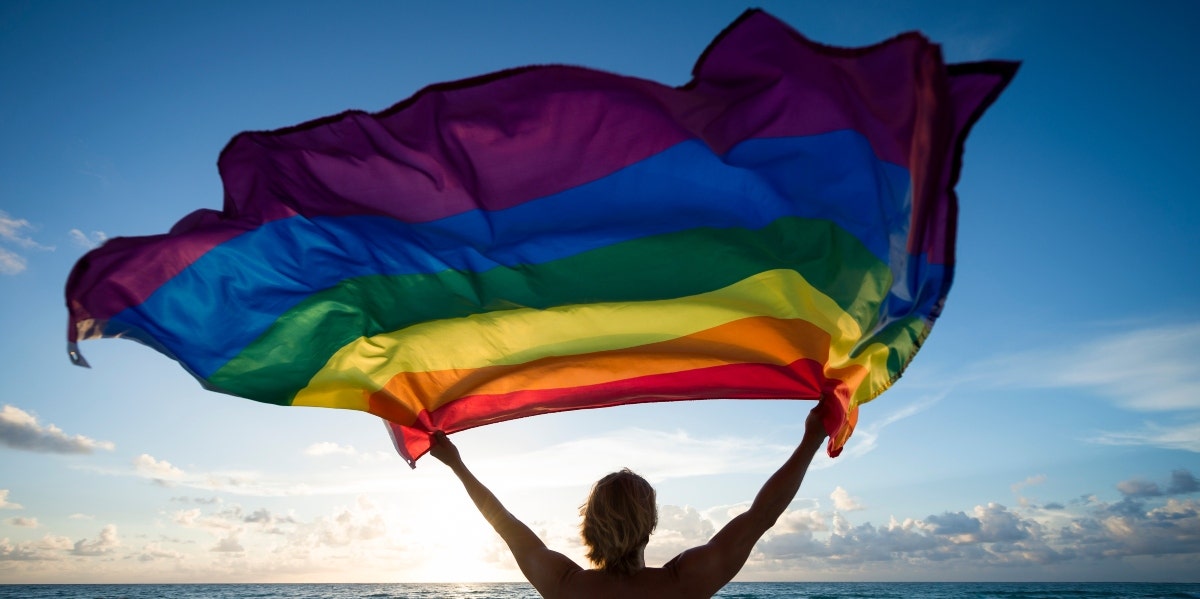 getty images
getty images We all know the "rainbow flag," which was first created in 1978 by San Francisco artist Gilbert Baker. It was one of the first sexuality flags ever created, designed as a call to unify the Gay and the entire LGBT community and meant to fly as a symbol of peace.
The flag's first public appearance occurred at the 1978 Gay Freedom Day Parade and the Rainbow became a symbol of Gay Pride during the Gay Movement.
Each of the eight stripes and colors represents some part of the community:
Hot pink: sex
Red: life
Orange: healing
Yellow: the sun
Green: serenity with nature
Turquoise: art
Indigo: harmony
Violet: spirit
Now, the rainbow sexual pride flag grew is now commonplace around the world.
The idea of sexual pride flags has caught on with many other groups, too, including people who enjoy kink. For example, there are flags for Fat Pride, Leather Pride, and even uniform fetish sexual pride flags for couples who like to dress up in uniform or military clothing during sex play.
What are all the different sexualities?
Our concept of sexuality is ever-evolving, so there's no one right answer with some estimates as high as 46 different sexualities and sexual orientations. The acronym that began simply as LGBT now spans across many letters and even numbers, with the full acronym often presented as LGBTQQIP2SAA.
Here are the 16 sexuality flags and what each flag represents.
1. Asexual Pride Flag
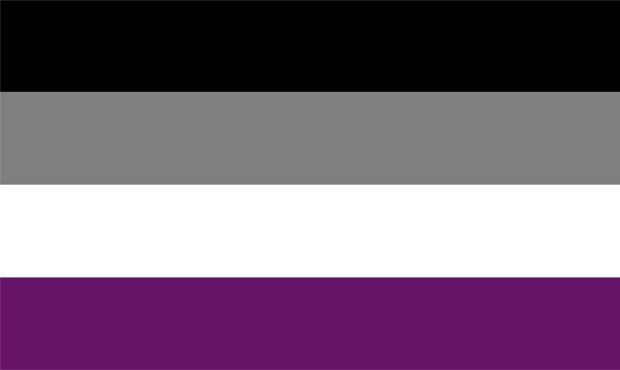 Photo: Save Nature and Wildlife / Shutterstock
Photo: Save Nature and Wildlife / Shutterstock
Asexuality is the lack of sexual attraction to others or low or absent interest in or desire for sexual activity.
The idea for an asexuality flag (commonly known as an Ace Flag) was first suggested on an Asexual Visibility and Education Network (AVEN) message board in May 2009. However, it wasn't until 2010 that two AVEN users named standup and Bristrek spearheaded a month-long effort to choose a flag.
The process included multiple AVEN threads and three stages of polls. In August 2010, the winning flag was chosen which was created by the AVEN user standup.
The flag has four horizontal stripes: black, gray, white, and purple from top to bottom.
Black represents asexuality.
Gray represents the gray-area between sexual and asexual.
White represents sexuality.
Purple represents community.
2. Bear Pride Flag
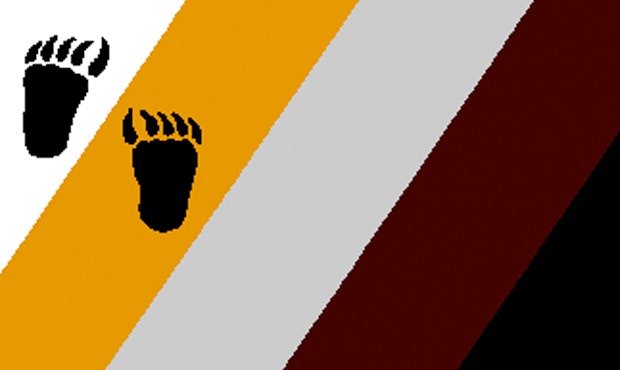 Photo: Wikimedia commons
Photo: Wikimedia commons
The gay bear subculture within the LGBTQ+ community celebrates secondary sex characteristics such as the growth of body hair and facial hair, which is typically considered a "bear" trait.
Being a "Bear" means you are a gay or bisexual man who has facial/body hair and a cuddly body.
Craig Byrnes created the Bear pride flag in 1995. Byrnes' undergraduate degree in psychology involved designing a senior project about the bear culture that has exploded since the early 1980s, of which he had the first-hand experience.
The flag had a gradient color from brown to black with a paw print of a bear claw in the upper left-hand corner.
Each color within the flag is supposed to represent the colors of the furs of animal bears throughout the world: Dark brown, orange/rust, golden yellow, tan, white, gray, and black.
3. Bisexual Pride Flag
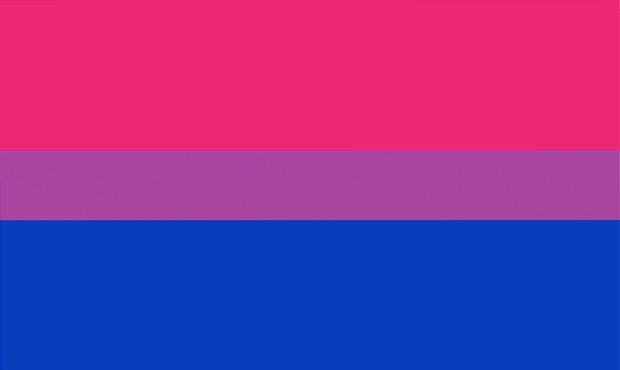 Photo: Oleksii Arseniuk / Shutterstock
Photo: Oleksii Arseniuk / Shutterstock
Bisexuality is when you are not exclusively sexually attracted to one gender.
The bisexual pride flag was designed by Michael Page in 1998. The flag contains three horizontal stripes of pink, purple, and blue from top to bottom. The blue and pink stripes representing male and female genders are larger than the purple stripe in the middle.
Pink represents the female gender.
Purple represents the sexual attraction to both men and women.
Blue represents the male gender.
4. Leather Pride Flag
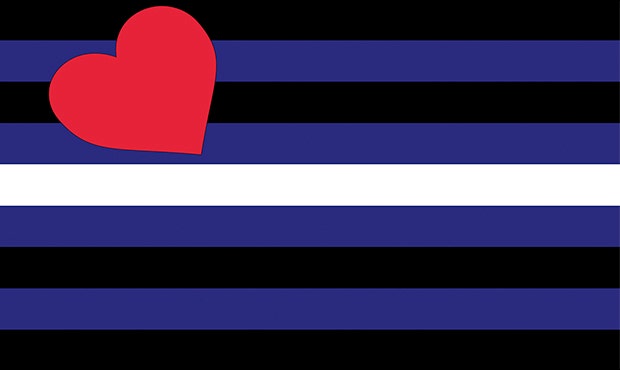 Photo: Wikimedia commons
Photo: Wikimedia commons
The Leather Pride flag was designed by Tony DeBlase and was quickly embraced by the gay leather community. It has since become associated with leather in general and also with related groups such as the BDSM community.
The flag was first displayed on May 28, 1989, at the Mr. Leather contest in Chicago. Although the flag is often common in the gay community, it is not a gay-only symbol.
The flag consists of nine horizontal stripes that alternate between black and blue with the center stripe being white with a red heart in the upper left-hand corner.
The red heart represents passion and love.
White represents purity.
Black represents leather.
Blue represents denim or jeans, often worn with leather.
5. Lipstick Lesbian Pride Flag
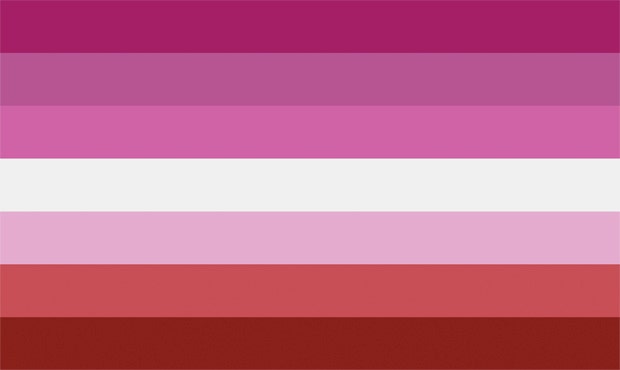 Photo: kallyfactory / Shutterstock
Photo: kallyfactory / Shutterstock
A lipstick lesbian is a lesbian who favors a glamorous, traditionally feminine style. The flag isn't widely adopted and is sometimes deemed offensive. The flag consists of six shades of red and pink colors and a white bar in the center with a red "kiss" in the upper left-hand corner. The flag was introduced in the weblog This Lesbian Life in 2010.
The original flag has not been widely adopted; however, its non-kiss variant attracted more use.
6. Pansexual Pride Flag
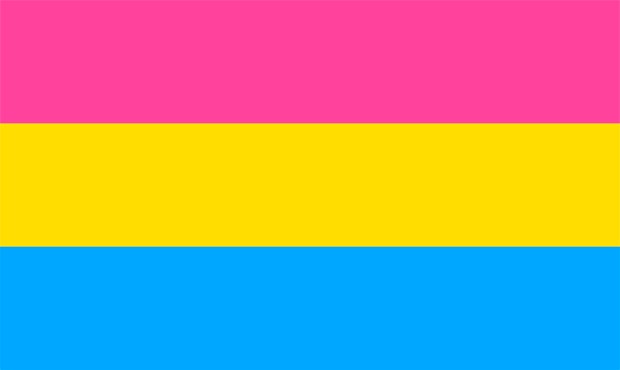 Photo: Wikimedia commons
Photo: Wikimedia commons
Pansexuality is the sexual, romantic, or emotional attraction towards people regardless of their sex or gender identity.
Do pansexuals have a flag? Yes!
The flag consists of three horizontal bars with the colors from top to bottom pink, yellow, and blue. The pansexual pride flag was created to differentiate between the bisexuality flag, which also has three horizontal bars. It was created on the internet sometime around 2010 but the sole creator is unknown.
Pink represents attraction to female-identifying people.
Yellow represents attraction to those who identify as genderqueer, non-binary, agender, androgynous, or anyone who doesn’t identify on the male-female binary.
Blue represents attraction to male-identifying people.
7. Lesbian Pride Flag
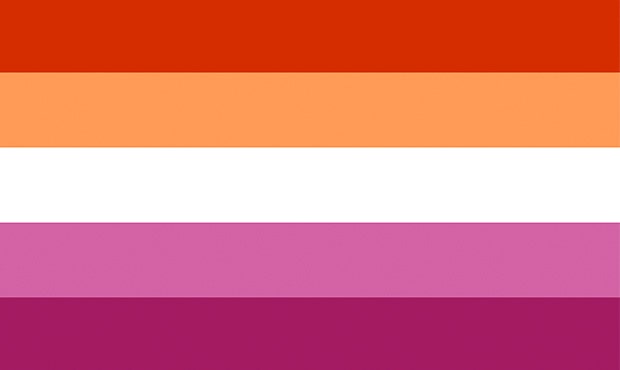 Photo: Wikimedia commons
Photo: Wikimedia commons
Lesbian sexuality is when a woman is sexually attracted to other women.
This sexual pride flag is tricky since the lesbian flag has gone through many, many versions.
The original "labrys lesbian" flag was created by graphic designer Sean Campbell, and published in June 2000 in the Palm Springs edition of the Gay and Lesbian Times Pride issue. The design involved a labrys on an inverted black triangle, set against a purple background.
Another lesbian flag came out of the "lipstick lesbian" flag called the "pink" lesbian flag which still represents "homosexual women who have a more feminine gender expression."
After the "lipstick lesbian" and "pink lesbian" flags were snuffed out, a Tumblr blogger named Emily Gwen created a design for a new lesbian flag in 2018.
This flag retained the seven stripes from the lipstick flag but switched out the top few shades of pink to orange shades.
Dark orange represents gender non-conformity.
Orange represents independence.
Light orange represents community.
White represents unique relationships to womanhood.
Pink represents serenity and peace.
Dusty pink represents love and sex.
Dark rose represents femininity.
Following the Tumblr post where the 7-stripe design was voted on, a second version with a simplified five-color design was introduced, but the seven-striped flag is the nationally accepted Lesbian Flag since 2018.
8. Gay Pride Flag
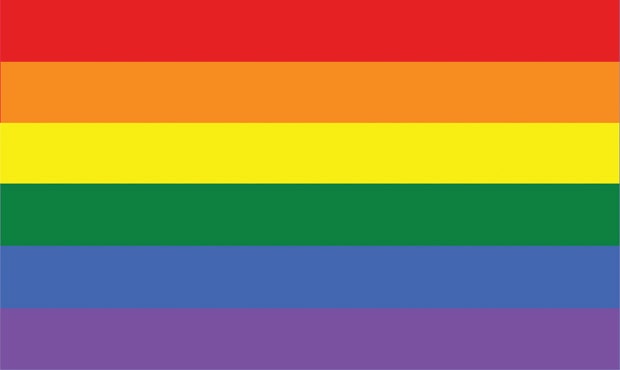 Photo: Save nature and wildlife / Shutterstock
Photo: Save nature and wildlife / Shutterstock
Gay is a sexual orientation towards people of the same gender.
We all know the "rainbow flag," which was first created in 1978 by San Francisco artist Gilbert Baker.
9. Polyamorous Pride Flag
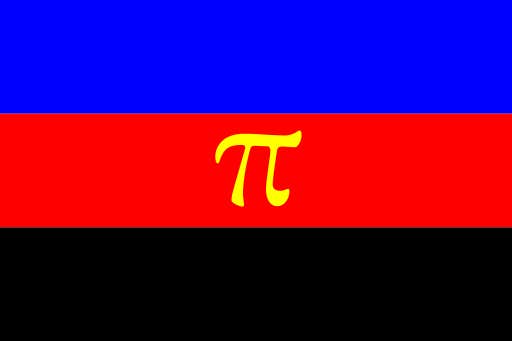 Photo: Wikimedia Commons
Photo: Wikimedia Commons
Polyamorous is when a person can love multiple people and/or be involved in multiple relationships within the context of mutual consent.
The original polyamorous flag was designed by Jim Evans in 1995 which consisted of three horizontal stripes of blue, red, and black with the symbol for the Greek letter of pi in yellow in the center.
In 2017, the University of Northern Colorado Poly Community modified the flag to include an infinity hearts symbol which is a common symbol of the polyamorous community instead of the pi symbol Evans used.
Blue represents the openness and honesty of all parties involved in the relationships.
Red represents love and passion.
Black represents solidarity with those who must hide their polyamorous relationships from the outside world.
Yellow represents the value placed on emotional attachment to others.
Infinity heart sign represents infinite love for multiple partners at the same time.
10. Straight Pride Flag
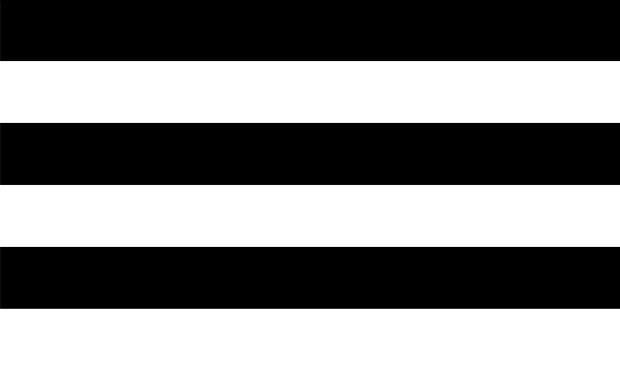 Photo: Oleksii Arseniuk / Shutterstock
Photo: Oleksii Arseniuk / Shutterstock
Straight is when you are heterosexual meaning you are attracted to the opposite sex.
The flag consists of six horizontal stripes of black and white. The creator is unknown at the time, but many point out that the flag mimics the striped Gay Pride Rainbow by changing the rainbow colors into neutral shades of black and white.
This flag has been rather controversial the past few years.
11. Straight Allies Pride Flag
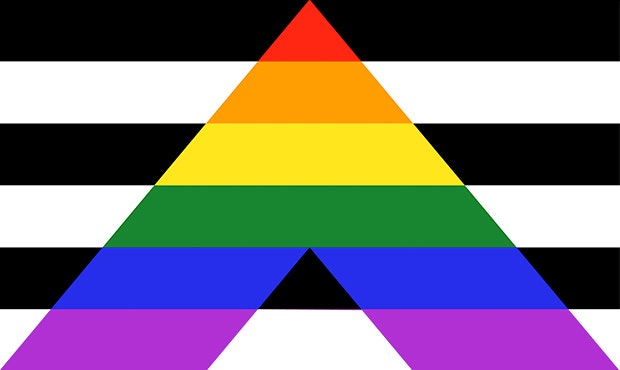 Photo: Oleksii Arseniuk / Shutterstock
Photo: Oleksii Arseniuk / Shutterstock
Straight allies are heterosexual and/or cisgender people who support equal civil rights, gender equality, LGBTQA+ social movements, and challenges any discrimination against the LGBTQA+ community.
The flag itself was created in the late 2000s. The creator is unknown.
It consists of horizontal black and white stripes with a rainbow chevron in the middle.
Black and white represent the yin and yang of female and male.
Rainbow chevron represents the letter "A" for Allies.
12. Intersex Pride Flag
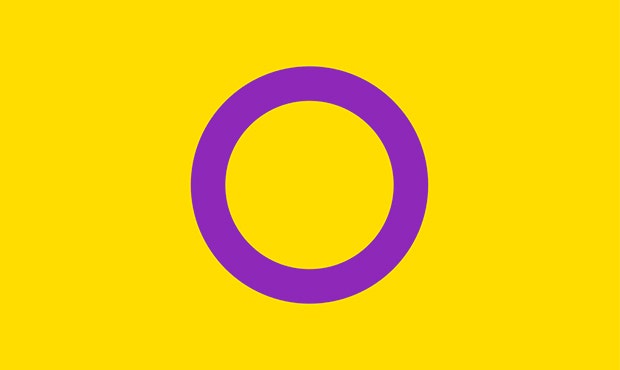 Photo: Wikimedia commons
Photo: Wikimedia commons
Intersex is defined as "individuals born with any of several variations in sex characteristics including chromosomes, gonads, sex hormones or genitals that do not fit the typical definitions for male or female bodies."
The flag was created by Intersex Human Rights Australia in July 2013. The flag was said to represent the community's "fight for bodily autonomy and genital integrity, and symbolizes the right to be who and how we want to be.”
The flag is a simple purple outline circle on a yellow background.
A purple circle represents wholeness, completeness, potentialities.
Yellow represents intersex.
13. Transgender Pride Flag
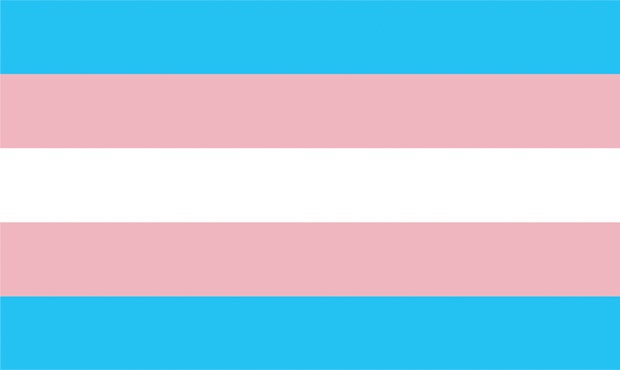 Photo: Julia Sanders / Shutterstock
Photo: Julia Sanders / Shutterstock
Transgender describes people who identify with a gender that differs from the sex they were assigned at birth.
The flag made its first appearance at a Pride Parade in Arizona in 2000, but the flag was created a year before in 1999 by American trans woman Monica Helms. According to Helms herself, "The pattern is such that no matter which way you fly it, it is always correct, signifying us finding correctness in our lives.”
The flag has five horizontal stripes of blue, pink, white, pink, blue.
Blue represents the traditional color for baby boys.
Pink represents the traditional color for baby girls.
White represents intersex, transitioning, or consider themselves having a neutral or undefined gender.
14. Genderqueer Pride Flag
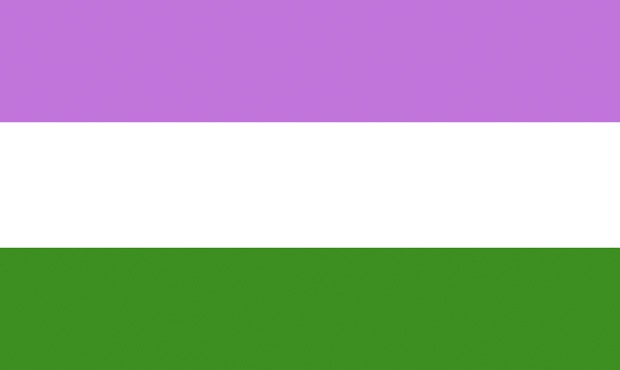 Photo: Oleksii Arseniuk / Shutterstock
Photo: Oleksii Arseniuk / Shutterstock
Genderqueer also means non-binary. It is a spectrum of gender identities that are not exclusively masculine or feminine and are identities that are outside the gender binary. The flag was created by genderqueer writer and advocate Marilyn Roxie in 2011.
The flag is made up of three horizontal stripes with the colors coined by the creator: lavender, white, and chartreuse.
Lavender (a mix of blue and pink) represents the colors traditionally associated with men and women and encompasses androgyny as well as queer identities.
White represents agender or gender-neutral identities.
Chartreuse represents third gender identities and identities outside the gender binary.
15. Genderfluid Pride Flag
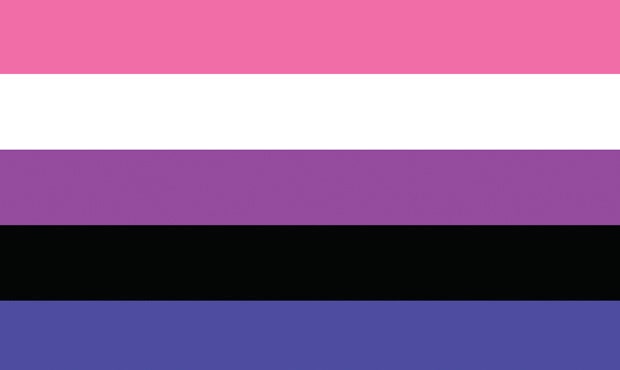 Photo: Martial Red / Shutterstock
Photo: Martial Red / Shutterstock
Genderfluid is when people don't have a fixed gender identity and their gender may change over time. The flag was created by JJ Poole and first surfaced on Tumblr in 2012.
The flag consists of five horizontal stripes from top to bottom:
Pink represents femininity.
White represents all genders.
Purple represents both femininity and masculinity.
Black represents a lack of gender.
Blue represents masculinity.
16. Demisexual Pride Flag
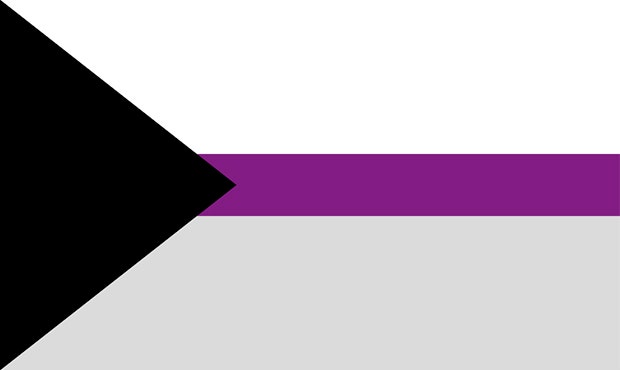 Photo: Wikimedia commons
Photo: Wikimedia commons
Demisexual is a sexual orientation where a person can only be sexually attracted to someone they have a strong emotional connection to. Demisexuality is on the asexual spectrum which is probably why the flag has the same color scheme as the asexual pride flag. It contains the same colors but has a different style to the flag making it their own.
While this sexual orientation is still gaining momentum and visibility the origination or creator of the flag remains unknown for now.
Black represents asexuality.
Gray represents sexuality and demisexuality.
White represents sexuality.
Purple represents community.
Jeena French is a contributor for YourTango.

